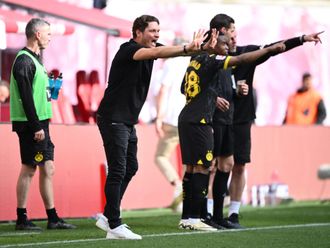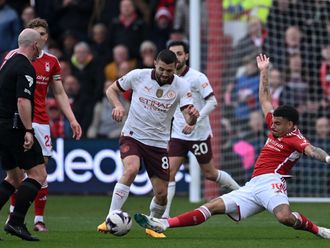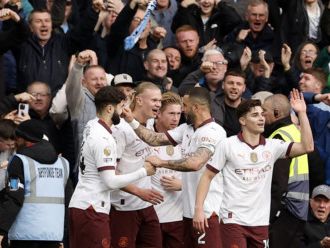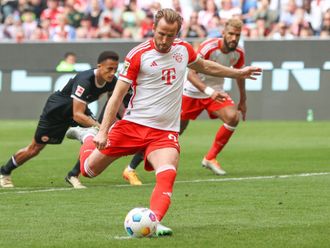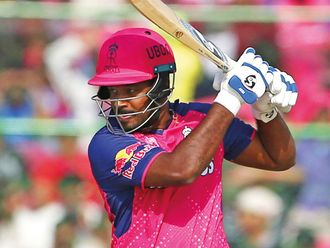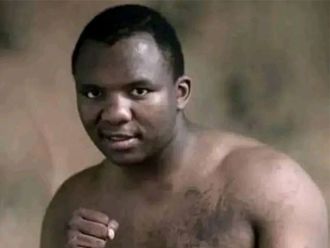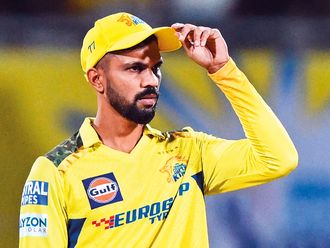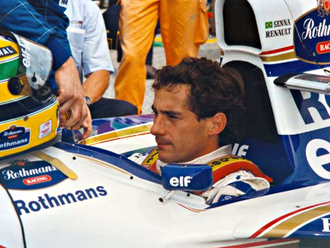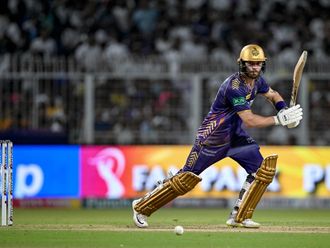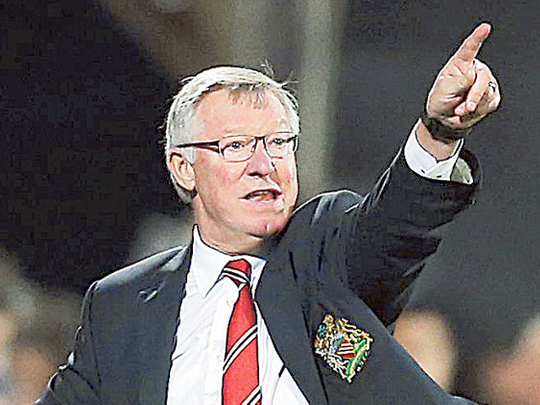
Manchester: Perhaps Sir Alex Ferguson’s greatest gift, certainly the one that has maintained him at the top of the British game for 35 years, has been his ability to evolve. No side he has had has ever been good enough to satisfy him; he has always been willing to cut and adapt.
Probably the most shocking change came in 2000. United had won the Treble the previous season and they were 10 points clear at the top of the Premier League when they met Real Madrid in the quarter-final of the Champions League. Probably no game since the Premier League came into being has had such tactical ramifications.
United had drawn 0-0 in Madrid in the first leg, and were widely expected to go on to wrap up the tie at Old Trafford, although Ferguson was concerned his team had been too timid. Del Bosque won the tactical battle at Old Trafford, adopting a lop-sided 3-3-2-2, rather than the four at the back they’d always previously played under Del Bosque. Both sides had chances and Aitor Karanka should have been sent off and United awarded a penalty for a goalline handball in the first half but Real Madrid took three of theirs. United fought back and in the end lost only 3-2, and could probably feel slightly unlucky, but the game fitted a pattern.
In 1996-97, United had played Borussia Dortmund in the semi-final and, after a 1-0 defeat in Germany, had been eliminated by an early goal in the second leg. The following year, against Monaco in the quarter-final, they had drawn 0-0 in France and again conceded early in the return, going out on away goals. Early concessions had become a United trait: in the 21 months from the start of the 1998-99 season, when the signings of Jaap Stam and Dwight Yorke completed the formation of that particular generation, United had come from behind to win or draw an astonishing 31 games. “I don’t think this team ever loses,” said the assistant coach Steve McClaren. “It just runs out of time.”
Ferguson kept saying that “we always do it the hard way” and “it’s the nature of our club” as though falling behind, as Rob Smyth put it in Issue One of The Bizzard, were nothing more than the “charming eccentricity of a brilliant side.” That loss to Real Madrid, though, changed his perception. “One of the forceful reminders delivered by that defeat was that consistent success in Europe would be more readily achieved if we improved our capacity to defend against the counter-attack,” he said. Rather than having 15 chances and allowing the opponent five, from then, in Europe particularly, Ferguson preferred to have five chances and given the opponent none. The adjustment proved difficult: between 1999 and 2007 they won only one knockout tie in Europe, against Deportivo la Coruna in 2002.
Ferguson had always been ruthless, as he had shown, for instance, in dropping Jim Leighton after the 1990 FA Cup final, bringing in Les Sealey for the replay, or in culling Paul Ince, Mark Hughes and Andriy Kanchelskis after United had lost in the 1995 FA Cup final having finished second in the league that season. But even by his standards the shift into cautiousness was a radical move.
When fans, frustrated by his tinkering, started chanting “4-4-2, 4-4-2” in the first years of that tactical transition, Ferguson replied that he had never played 4-4-2. In a strict sense, that may have been true, for when one striker is tucked behind the other it’s never easy to determine when 4-4-2 becomes 4-4-1-1, but his sides until then had always been part of the 4-4-2 family.
The Aberdeen side that won the Cup Winners’ Cup final against Real Madrid in 1983, for instance, was set up in the lop-sided 4-4-2 familiar in Britain at the time with Gordon Strachan tucked in on the right side of midfield, Peter Weir as a more attacking winger on the left, and Eric Black dropping off the central striker Mark McGhee. Ferguson’s first game in charge of United, against Oxford in November 1986, was similar in shape, with Clayton Blackmore an industrious and not overly creative right-sided midfielder, Peter Barnes a more flamboyant presence on the left and Peter Davenport supporting the main striker Frank Stapleton.
Not that Ferguson stuck rigidly to that shape. In the Cup Winners’ Cup final in 1991, for instance, when United beat Barcelona, Ferguson fielded something that today would probably be regarded as a 4-2-3-1: Mark Hughes was the out-and-out centre-forward, with Brian McClair playing deep behind him in part, presumably, to try to disrupt Ronald Koeman, who set the tempo for Barca from deep. Mike Phelan and Lee Sharpe provided the width, with Paul Ince and Bryan Robson sitting in front of the back four.
The team that developed from that one was a side of great pace: with Kanchelskis, Lee Sharpe and Ryan Giggs they scored a lot of goals on the counter-attack, something that first emerged in 1992-93 as United won their first title for 26 years. They key game that season probably came in the March when they went to Norwich City, at the time two points clear at the top of the table. With Hughes suspended, Ferguson turned to Kanchelskis, leaving Ince as the sole defensive presence in midfield, with Sharpe, McClair and Kanchelskis arrayed ahead of him, and Eric Cantona and Giggs as the nominal centre-forwards. United raced into a three-goal lead, the second, scored by Kanchelskis from McClair’s long pass, a classic counter.
It was that shape and philosophy that carried United to the 1999 Treble. Cantona had gone, but the dynamic of Dwight Yorke and Andy Cole was similar to that between Cantona and Hughes, with a highly energetic and creative midfield of, from right to left: David Beckham, Roy Keane, Paul Scholes and Giggs. But after the defeat to Real Madrid, the faith in 4-4-1-1/4-4-2 waned.
In the Champions League quarter-final in 2007, United beat Roma 7-1. They played their usual 4-4-1-1: Cristiano Ronaldo and Giggs providing the width, with Darren Fletcher and Michael Carrick deep in the centre of midfield, where Rooney, dropping off the centre-forward Alan Smith, would occasionally join them. Roma, meanwhile, having won the first leg 2-1 at the Olimpico, played without a recognised centre-forward, Francesco Totti falling backwards the midfield. Yet after being made to look leaden-footed in losing to AC Milan in the semi-final, United adopted Roma’s approach the following season. With Ronaldo, Wayne Rooney, Carlos Tevez and Ryan Giggs or Nani slung in front of a holding pair of two from Owen Hargreaves, Michael Carrick, Anderson and Paul Scholes, United regularly played with no obvious front-man, with the front four taking it in turns to become the de facto striker. That is a difficult system to pull off, as was shown by United’s lack of goals in the early games of the season, and by the desperate use of the defender John O’Shea as a makeshift target-man as they struggled to find fluency in drawing 0-0 against Reading on the opening day, but when it clicked it could be brilliant. Ronaldo, in particular, benefited from the selfless running of Rooney and Tevez, scoring 31 league goals in 2007-08.
Oddly, in the Champions League final against Chelsea that year, United reverted to a typical, almost old-fashioned, 4-4-2, a side that had never played together before, and never played together since. As in 1999, United got lucky. If there is a tactical criticism of Ferguson, it is perhaps that at times, particularly for big games, he overthought. In that final, he used Owen Hargreaves wide on the right, presumably to pen in Ashley Cole, Chelsea’s full-back, while Ronaldo was used on the left, perhaps to try to exploit Michael Essien, a midfielder being used at right-back. For half an hour it seemed to work, and Ronaldo put United ahead, but from then on Essien stormed past the winger again and again. One of his surges led to Frank Lampard’s equaliser, and Chelsea had much the better of the rest of the game before losing on penalties. It was a result but not a performance to vindicate Ferguson, and it may be he would have won a second European title had he not felt the need to shift to a more defensive system after the 2000 defeat to Real.
Since 2005-06, when the doubts were at their strongest since that first FA Cup win in 1990, Ferguson has won seven league titles and appeared in three Champions League finals. Nobody has ever been so successful at such a high level for so long. Nobody has ever been so adept at evolving as the game evolved.


